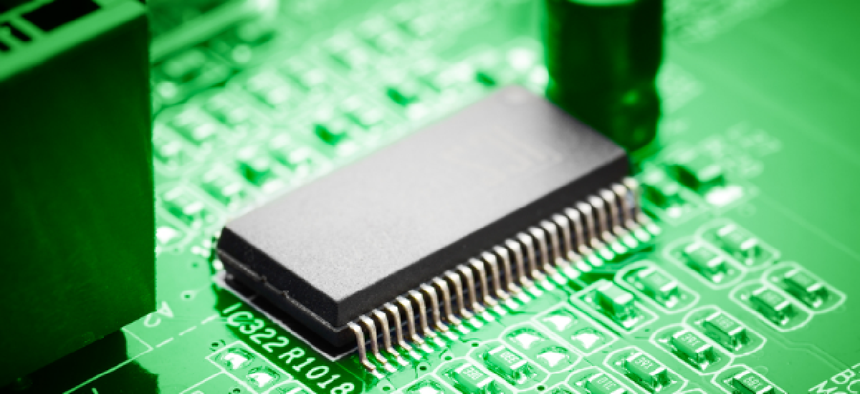MIT's 110-core processor could help boost efficiency


Connecting state and local government leaders
Chips that can effectively take advantage of multiple cores could be useful in government, giving agencies a way to downsize data centers and make them more efficient without losing processing capacity.
How many angels can dance on the head of a pin? It's a silly question that was seriously debated by medieval scholars. The modern equivalent may be: "How many cores can fit on the silicon of a chip?"
Cores are the independent processors that execute program instructions.
Having multiple cores is a big advantage, to a point, especially if software is written to take advantage of them. Dual-core computers generally outperform single chip and core models, and quad-core systems are fairly standard these days.
A multiple core chip is like having two brains in one head. In some cases you can double the performance of a machine versus a single-core processor, without doubling power or resource requirements.
That might be especially useful to government since it gives agencies a way to downsize data centers and make them more efficient without losing processing capacity, at least in theory.
Now some companies have upped that ante, offering up to 12 cores. It gets murky after that though, because almost no software will be written to, or even could, take advantage of so many cores.
Back in 2009, Intel showed off a 48-core chip that was aimed at data centers. The Single Chip Cloud Computer, as it was called, had a lot of advantages, the principal one being that, with the chip consuming only as much electricity as two standard household light bulbs, data centers in the future could be much smaller and more energy efficient than they are today.
Then Tilera burst onto the scene, with a promise of 100-core chips. The company got there, too, though most of its chips top out at lower numbers of cores.
Now Computerworld reports that MIT has developed a 110-core chip that could improve performance in mobile devices, PCs and servers. That's not a joke, but it's not a processor that will be dropped into anyone's iPhone or Android anytime soon, either. Called the Execution Migraine Machine, it's designed to help scientists study the problems of having programs run between multiple cores, one of the problems that are holding back realistic use of multicore processors outside of specialized settings.
That's probably a good thing, because until software starts being able to efficiently work between multiple cores, it won't really matter how many a device has, especially for something like a smartphone. Everything beyond the first or second core, or certainly the fourth, is just going to be wasted capacity and unwanted expense.
NEXT STORY: Next role for robots: data center diagnosticians




